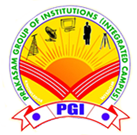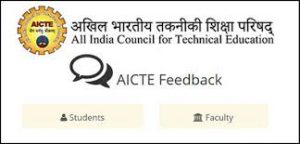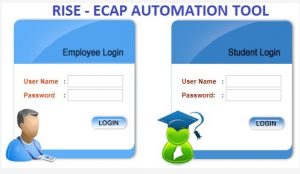CodeTantra's unique intelligent interactive learning platform guarantees that the learner will be able to write code on completion of the learning program. The platform handholds the student by teaching one simple concept at a time, followed by numerous drilling exercises till the concept is transformed into a skill. The platform's automated learn-code-and-learn technique builds confidence and by continuous and incremental application of concepts. The best teaching practices recommended by Bloom's Taxonomy have been employed in building this unique Learning-by-Doing platform.
Objective:-
Every engineering graduate must be able to write code "period".
Significance of Results:-
• Interactive learning• Self Practice intuitive
• Live Hands-On Practice
• Interactive Error Analysis and Feedback
• Produce Executable Programms
• Instant Contextual Help
Objectives
1. To strengthen teachers' skills in making teaching-learning process more effective 2. To attract and retain learners' attention 3. To generate interest across different levels of students 4. To develop lesson plans that are simple and easy to follow 5. To make class more interactive and interesting 6. To focus on student-centered approachSignificance of results:
• Best motivation. • Clear image. • Save energy and time. • Capture attention. • Reinforcement to learner. • Gain & hold student interest. • Stimulate the development of understanding and attitudes.How 4 stroke engine works
Significance of Results:
• Improves communication skills • Create interest in student • Improves teacher and student interaction • Improves Students Academic Performance • Creates awareness about the topic • Improve the coordination among the students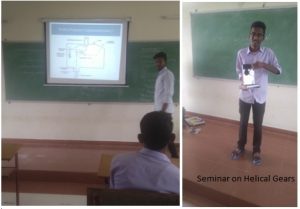
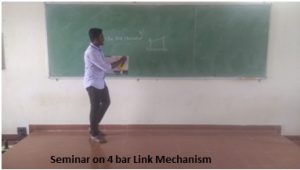
Objectives:-
1. Creating of a Strong Desire: The basic aim of demonstration is to create a very strong desire is the mind of prospect to possess the product, which he wants to sell. It is demonstration that has the ability, to desire to a strong sense of possession.
2. Generation of Positive Attention towards the Product: Many a times the prospects have a state of wavering mind, as they are not fully attentive of product. Creation of positive attitude towards the product is the part and parcel of persuasion process in the game of selling.
3. Helping the Prospect to Come to Definite Decision to Buy: Mere presentation is a oral expression or description of the product. It has effect. However, the effect is not generating any positive change of attitude and action. It is demonstration that applies multi-sense approach, which definitely helps the customer or prospect to come to positive conclusion. That is, he may be deciding to buy or going for a product.
Significance of Results:-
• This strategy improves the understanding of complex skills and principles.
• Students can pay their attention and follow along with the learning process.
• Knowledge becomes permanent because this method requires different human senses.
• Students are motivated to study and gain necessary skills.
• The psychomotor objective is easily achieved through this method.
• No time is wasted because students see the process live and understand how to apply theoretical knowledge practically.
Objective:-
A quiz can function throughout a course as an informative feedback device allowing both the instructor and the students to see where they are excelling or need more focus. In order to effectively create exams and quizzes, it is important to establish and understand the learning objectives that are being measured.Use these assessment tools to test student knowledge of:
• Various effective teaching strategies • The strategy used to help students understand the perspectives of others • The definition of a case studySignificance of Results:-
• Interactive platform: Today, quizzes are interactive platforms where students are not participating to take home a prize or get famous overnight, but to gain knowledge, seek opportunities to excel beyond academics and secure their future. • Changes scope of learning: Since questions are based out-of-syllabus and require critical thinking and extensive research, students get into the habit of innovative learning from an early age. • Encourages team work: Students need to form teams while participating in quizzes, giving them an opportunity to hone their teamwork skills. • Bridges academia-industry gap: During interviews, recruiters have found that Indian students are good in theoretical knowledge but are not privy to industry knowledge because of the current pattern of curriculum. Hence, there is still a huge gap in preparing our students for the market.A massive open online course (MOOC) is an online course aimed at unlimited participation and open access via the web. In addition to traditional course materials, such as filmed lectures, readings, and problem sets, many MOOCs provide interactive courses with user forums to support community interactions among students, professors, and teaching assistants , as well as immediate feedback to quick quizzes and assignments. MOOCs are a recent and widely researched development in distance education. MOOCs were created from the idea of covering an entire university course online and thereby making it accessible to everyone in the world. The intent was to "democratize" educational content from elite universities. High-quality education should not be available to just a small group of university students in developed countries, but to everyone who is willing to learn
What’s so innovative about MOOCs?
1. Teaching in a modern video format (not just texts like those that you’d find in other e-learning courses).2. Openly accessible learning content from top universities like Harvard, Stanford, etc.
3. Courses in a true online format (no paper-based study materials like those required in traditional distance learning).
4. Online interaction between learners and teachers (via discussion forums).
5. Online tests (often resulting in certificates with verified identity of participants).
Collaborative learning is a method of instruction that basically involves grouping students to work together towards a common academic goal. The method is based on the theory that knowledge is a social construct that educational experiences that involve interaction and social exchange, that are contextually relevant and engaging and are student-centered, lead to deeper learning. Experts in collaborative learning claim that the active exchange of ideas within groups of students promotes critical thinking and there seems to be quite persuasive evidence that teams engaged in cooperative learning achieve at higher levels of thought and retain information longer than students who work solely as individuals. Collaborative learning creates a role shift between learners and teachers. The responsibility for the process is placed on the learner, in the role of researcher of his/her field of study. By engaging in discussion and taking responsibility for their learning, students further develop their critical thinking.
Significance of results:-
• Develops higher level thinking skills • Promotes student-faculty interaction and familiarity • Builds self esteem in students • Enhances student satisfaction with the learning experience • Promotes a positive attitude toward the subject matter • Develops oral communication skills • Develops social interaction skills • Creates an environment of active, involved, exploratory learning • Uses a team approach to problem solving while maintaining individual accountability • Encourages student responsibility for learning • Involves students in developing curriculum and class procedures • Students explore alternate problem solutions in a safe environment • Stimulates critical thinking and helps students clarify ideas through discussion and debate • Enhances self management skills • Modeling problem solving techniques by students' peers • Promotes higher achievement and class attendance. • Creates a stronger social support system • Creates a more positive attitude toward teachers, principals and other personnel by students and creates a more positive attitude by teachers toward their students • Promotes innovation in teaching and classroom techniques • Classroom resembles real life social and employment situations • Students practice modeling societal and work related roles • Increases leadership skills of studentsCase Study or Real time Example
Case analysis can help students develop their understanding of concepts and theory and how they are applied, refine their analytical and decision making skills, provide opportunities to synthesize learning in a variety of areas and ultimately build their confidence to deal with complex organizational situations.Objective:-
The purpose or objective of doing Case Study is to allow students with real expertise and understanding, as well as judgement to excel.Significance of results of case studies in class
A major advantage of teaching with case studies is that the students are actively engaged in figuring out the principles by abstracting from the examples. This develops their skills in:
1. Problem solving
2. Analytical tools, quantitative and/or qualitative, depending on the case
3. Decision making in complex situations
4. Coping with ambiguities
Online Programming Courses
Objectives To allow students to complete degree requirements at their own pace. To enable students to successfully meet coursework requirements without classroom attendance. To develop an individualized program of study for each student. To provide students with the most comprehensive and current information available in their field of study. To utilize evaluation materials which require the student to demonstrate the effective integration of concepts and skills. To make available to students all materials necessary to successfully complete their degree requirements, and to give students access to faculty members who can provide assistance and guidance when necessary. To enable students to effectively integrate concepts and skills across functional areas. To instill in students the value of life-long learning. To encourage students to take advantage of life-long learning opportunities.Significance of results:-
1. Variety of programs and courses: From traditional four-year universities to completely online career colleges, higher education today offers a variety of options for students. This means that no matter what students study, from nursing to neuroscience, they can find the courses or programs they need online. Students can also earn every academic degree online, from a career certificate to a doctorate. 2. More comfortable learning environment: Commercials that feature online students studying in their pajamas only skims the surface of one of the benefits of online education: no physical class sessions. Students listen to lectures and complete assignments sent to them electronically, with no need to fight traffic, leave work early for class, or miss important family time. 3. Convenience and flexibility: Online courses give students the opportunity to plan study time around the rest of their day, instead of the other way around. Students can study and work at their convenience. Course material is always accessible online, making special library trips unnecessary. All of these benefits help students balance work and family commitments with their education. 4. More interaction and greater ability to concentrate: While contradictory evidence about the rate of online student participation versus participation in traditional courses exists, one thing remains certain: Online courses offer shy or more reticent students the opportunity to participate in class discussions more easily than face-to-face class sessions. Some students even report better concentration in online classes due to the lack of classroom activity. 5. Career advancement: Students can take online courses and even complete entire degrees while working, while in-between jobs, or while taking time to raise a family. This academic work will explain any discontinuity or gaps in a resume as well. Also, earning a degree can show ambitiousness to prospective employers and a desire to remain informed and prepared for new challenges. 6. Avoid commuting: During snowstorms and thunderstorms, colleges may cancel classes to avoid putting commuting students at risk of dangerous driving conditions. Rather than miss important class sessions, students in online courses can always "attend" by participating in discussion boards or chat sessions, turning in their work on time, and watching lectures or reading materials. Many students also find substantial savings on fuel costs with no commute for classes. 7. Improve your technical skills: Even the most basic online course requires the development of new computer skills, as students learn to navigate different learning management systems (LMS) and programs. The participation skills students learn within their online courses translate to many professions, including creating and sharing documents, incorporating audio/video materials into assignments, completing online training sessions, etc.Objectives:-
1. To provide a safe space and learning environment for young people without fear of judgment, misunderstanding, harassment or abuse. 2. To increase social connectedness and create a sense of belonging within supportive peer networks. 3. To provide positive role models, positive peer influences and opportunities which help young people to develop a positive self concept, self acceptance and high self esteem. 4. To prevent the onset or further development of mental health problems including depression, anxiety, self harm and suicidal ideation. 5. To increase confidence and to develop and enhance communication and social skills. 6. To empower young people to build personal resilience and improved help-seeking behaviour through increased knowledge of available support, reduced stigma associated with mental health difficulties and help-seeking, the development of positive coping strategies and the development of skills needed to access help. 7. To foster future thinking and optimism and to widen young people’s understanding and beliefs of the opportunities available to them.Significance of Results:-
• Students receive more time for individualized learning. • Direct interaction between students promotes active learning. • Peer teachers reinforce their own learning by instructing others. • Students feel more comfortable and open when interacting with a peer. • Peers and students share a similar discourse, allowing for greater understanding. • Teachers receive more time to focus on the next lesson.
Objective:-
The objective of role playing is to learn, improve or develop upon the skills or competencies necessary for a specific position.Significance of Results:-
• Students immediately apply content in a relevant, real world context. • Students take on a decision making persona that might let them diverge from the confines of their normal self-imposed limitations or boundaries. • Students can transcend and think beyond the confines of the classroom setting. • Students see the relevance of the content for handling real world situations. • The instructor and students receive immediate feedback with regard to student understanding of the content. • Students engage in higher order thinking and learn content in a deeper way. • Instructors can create useful scenarios when setting the parameters of the role play when real scenarios or contexts might not be readily available. • Typically students claim to remember their role in these scenarios and the ensuing discussion long after the semester ends.Objective:-
The Objective of the brainstorming session is to generate many creative ideas to answer a specific goal. It is best to express the goal as a question.Significance of Results:-
Encourages Critical Thinking Which makes sense since brainstorming is meant to solve problems. Gets You Out of Your Head As Joe Master noted, we all walk into meetings with our own ideas, but the act of brainstorming forces us to consider and examine other people’s ideas. Brainstorming Builds Teams Since brainstorming is a collaborative experience, no one person walks out of the meeting taking ownership of the results, thus it an absolute team effort.
